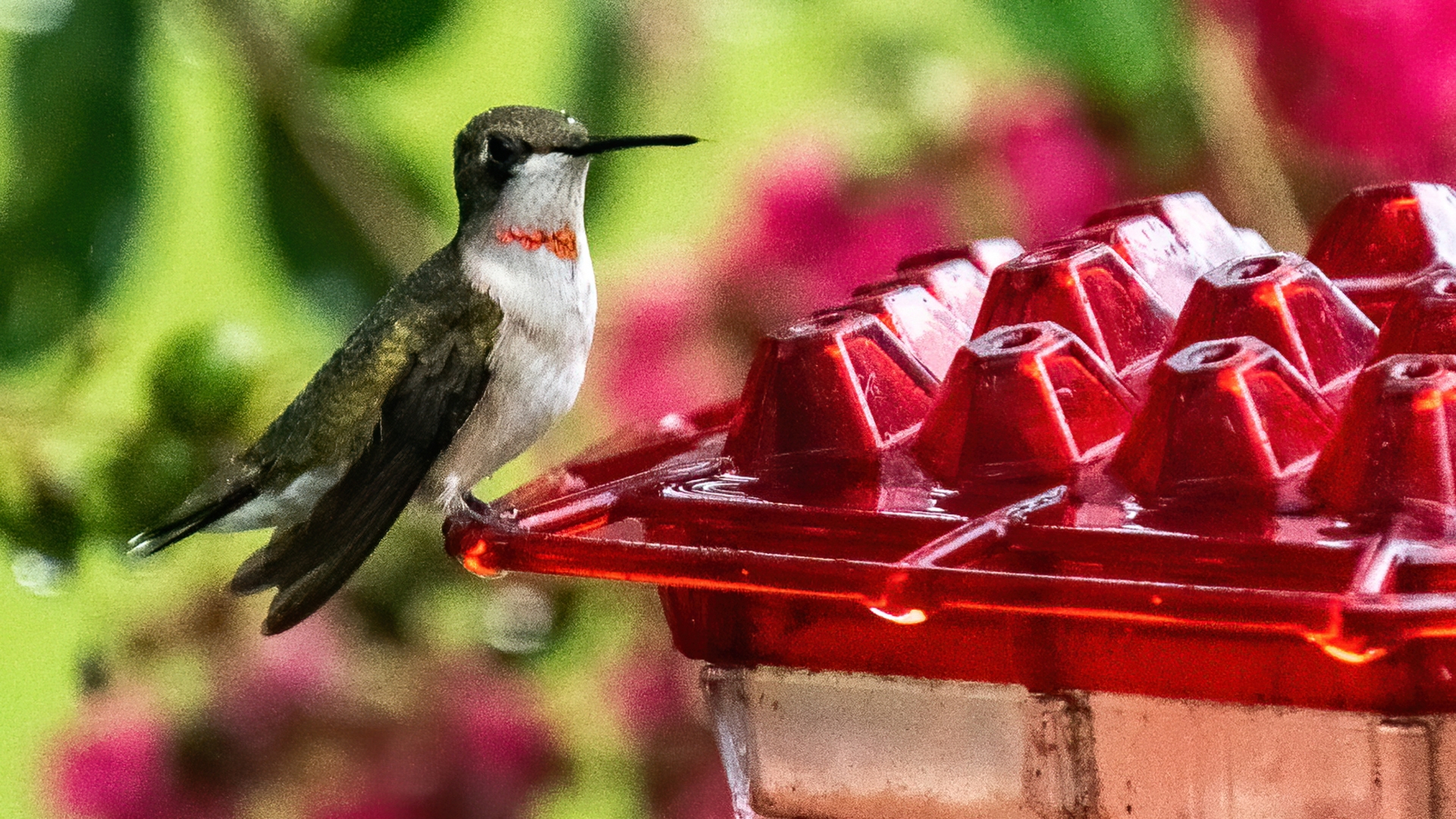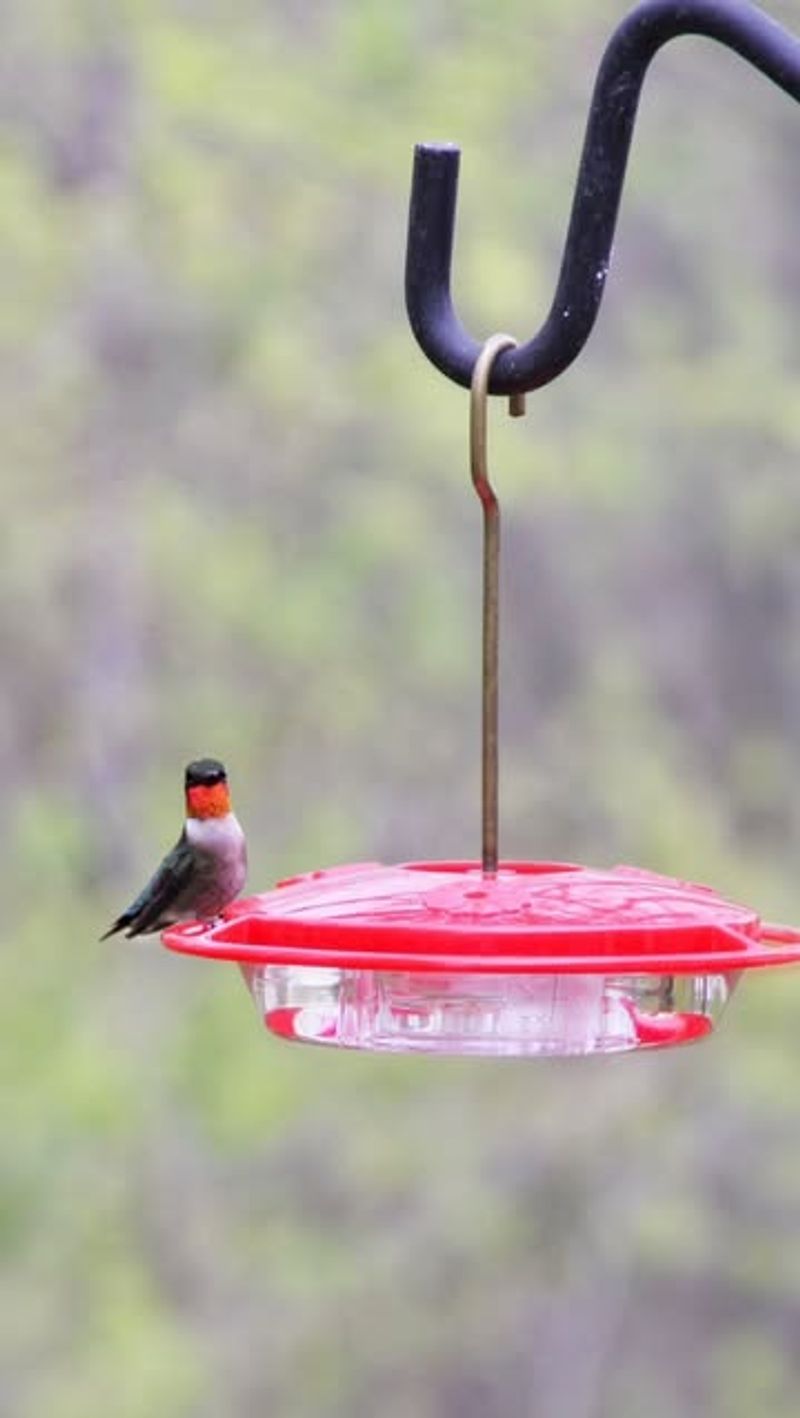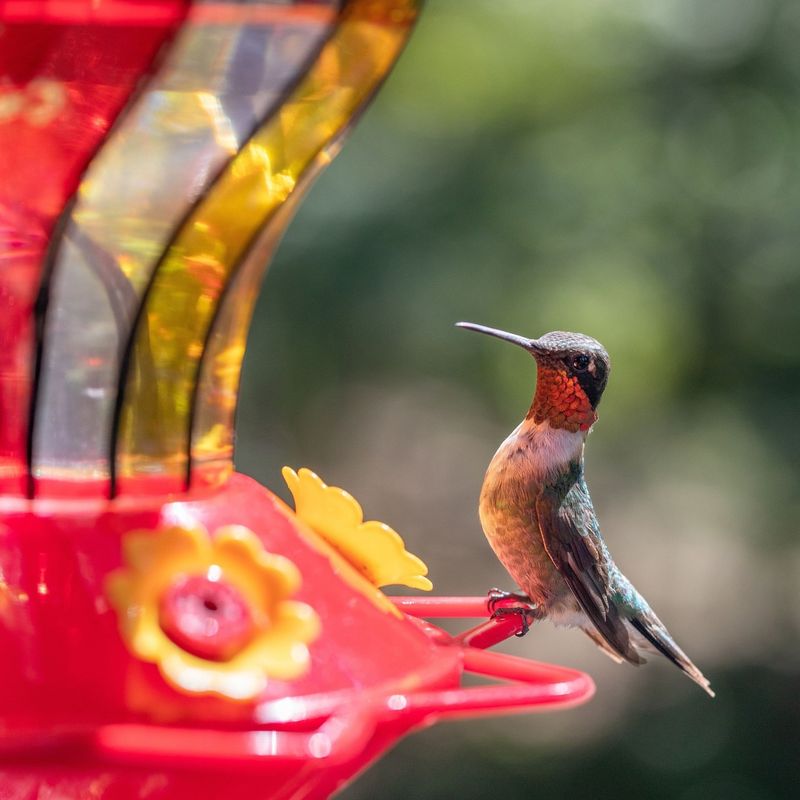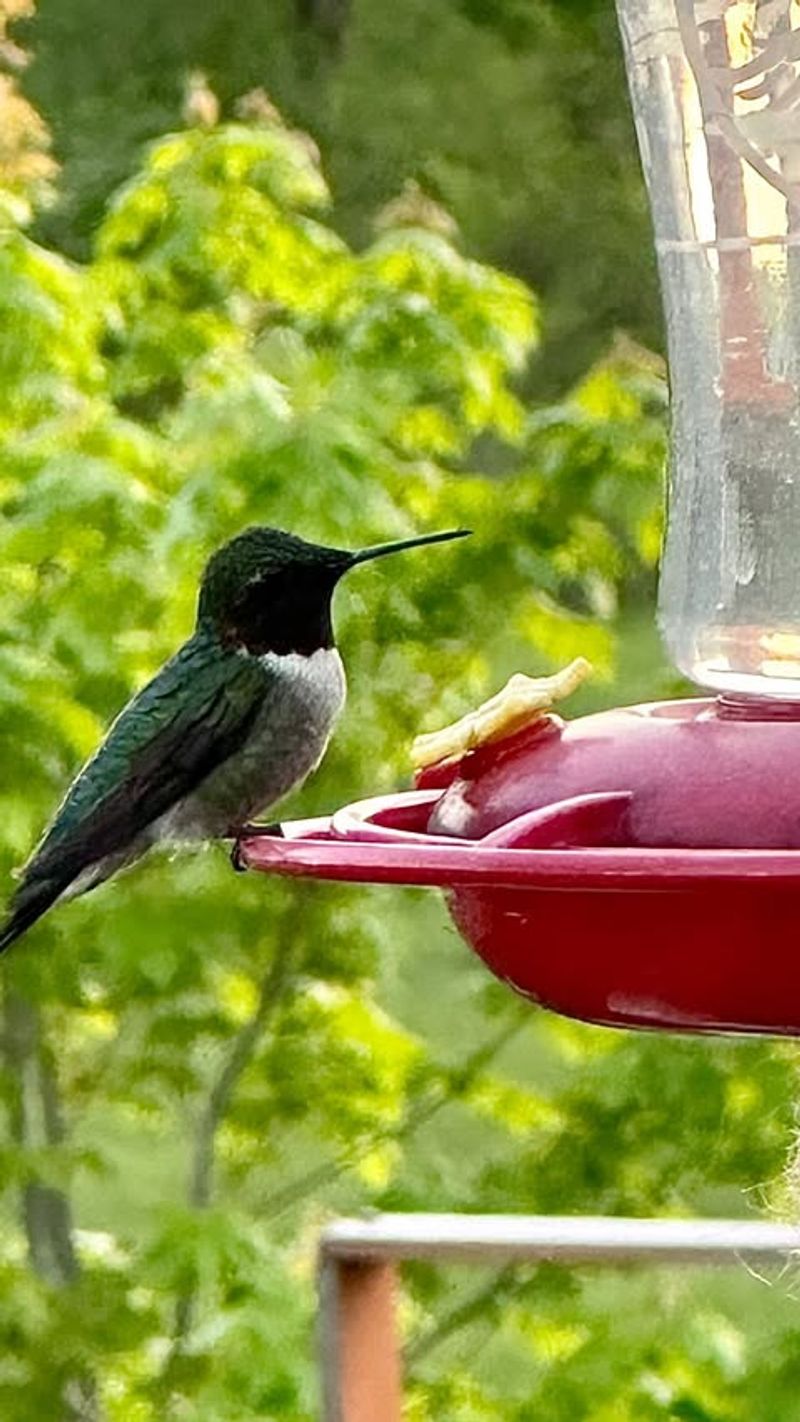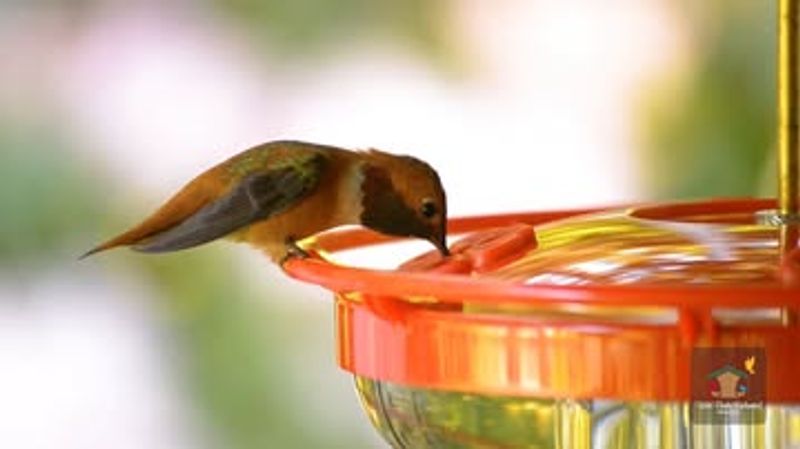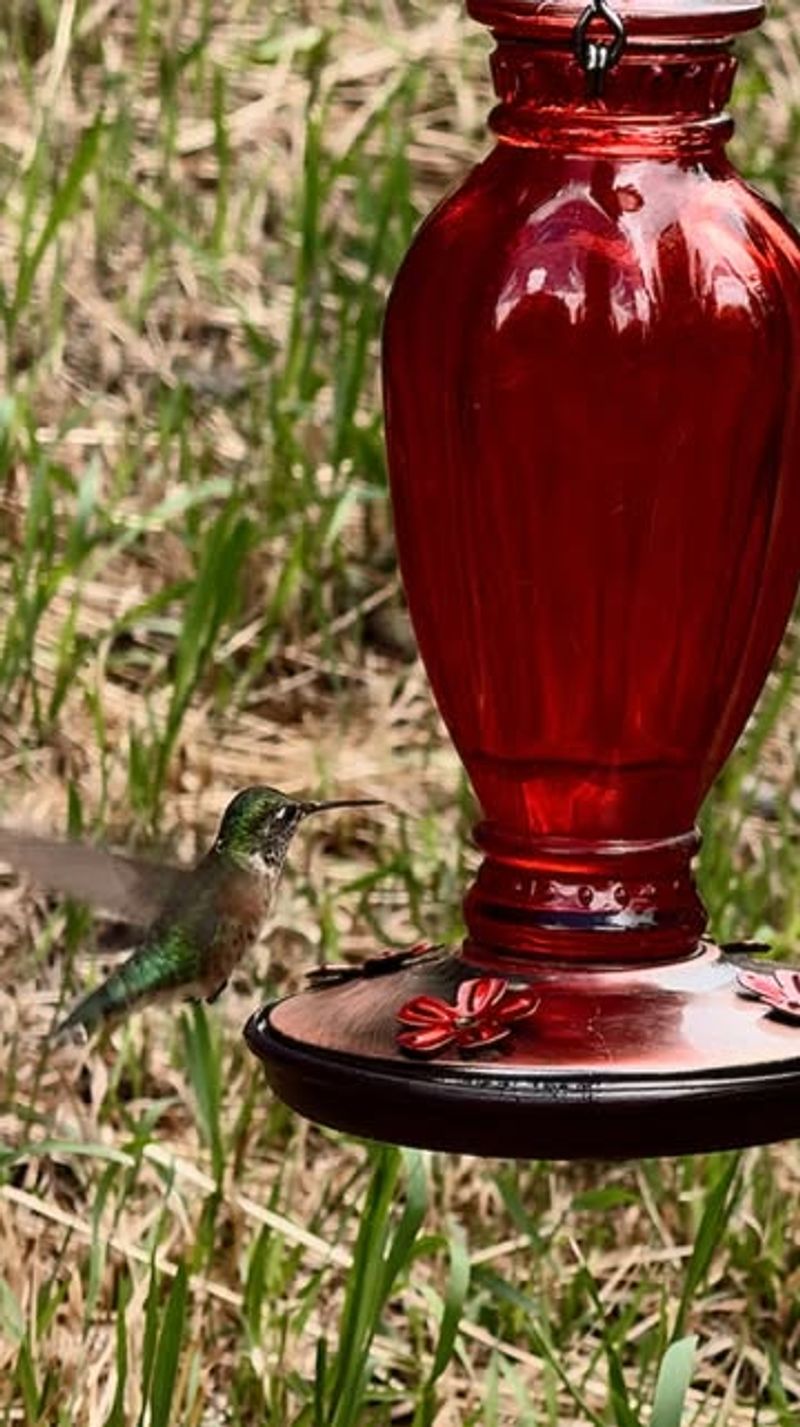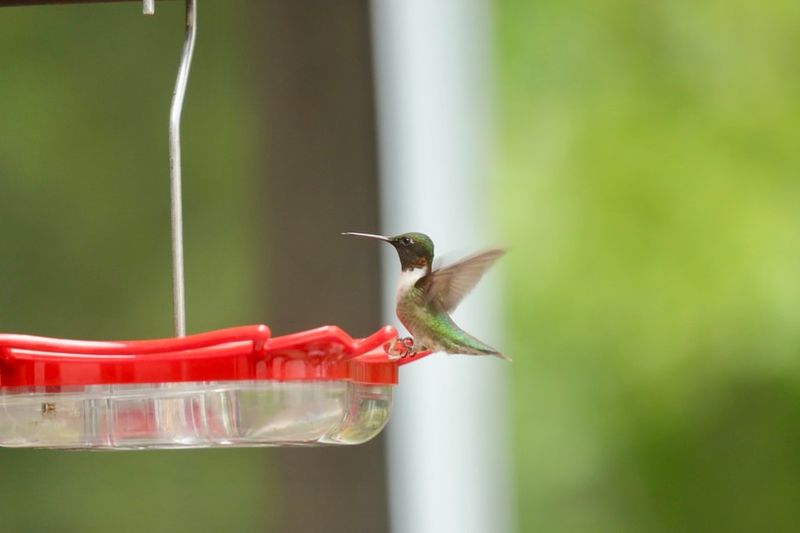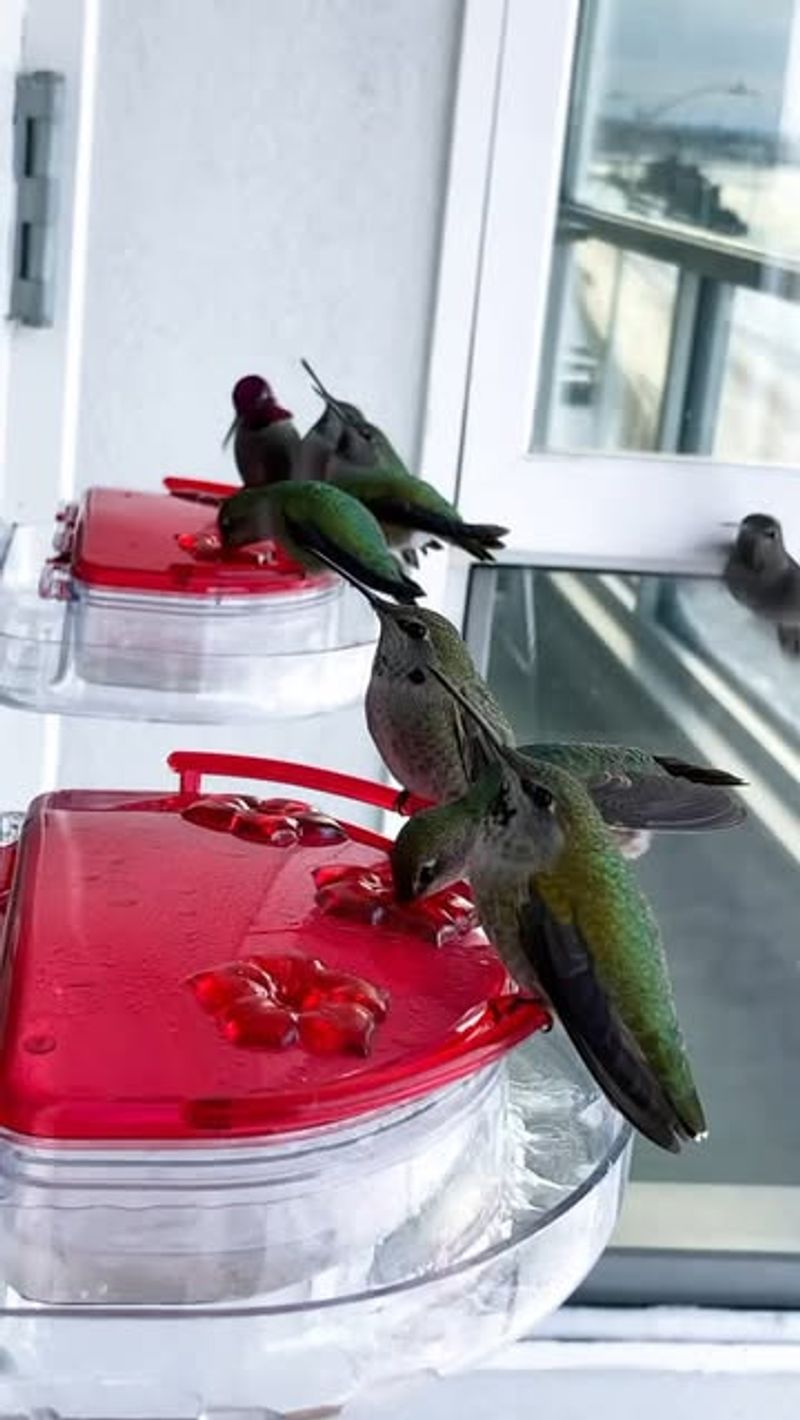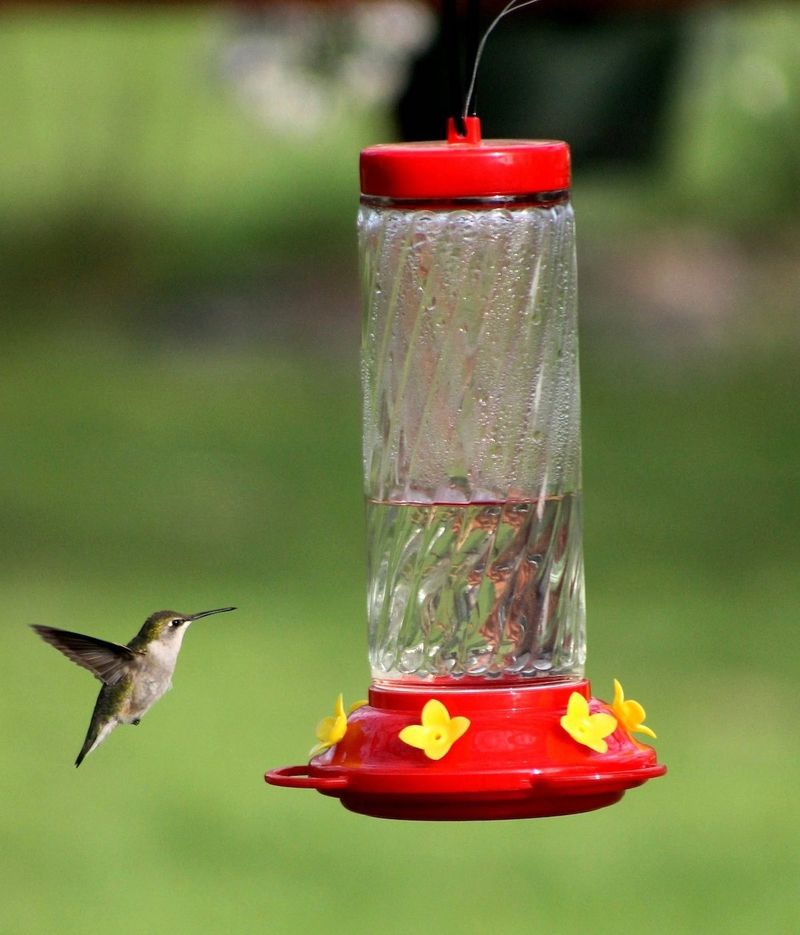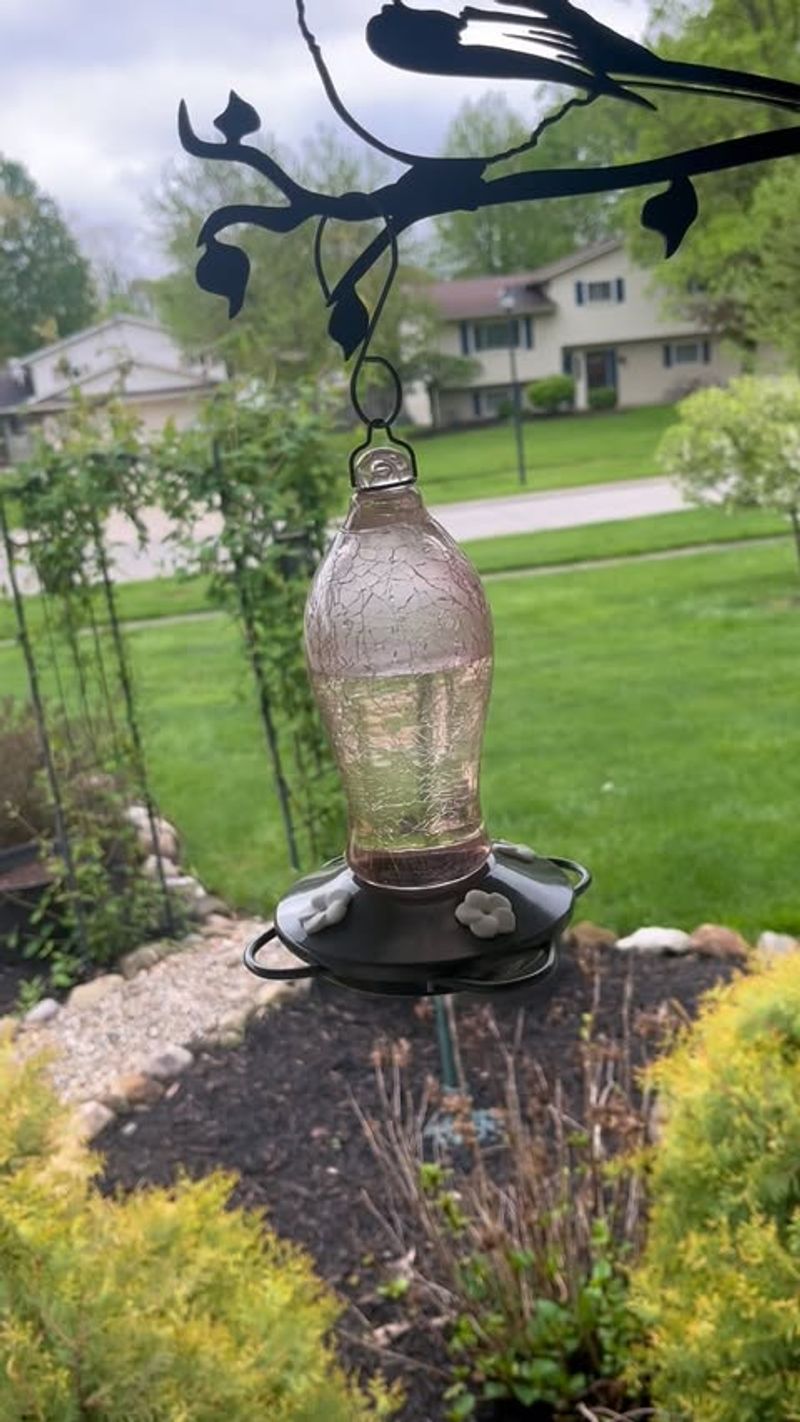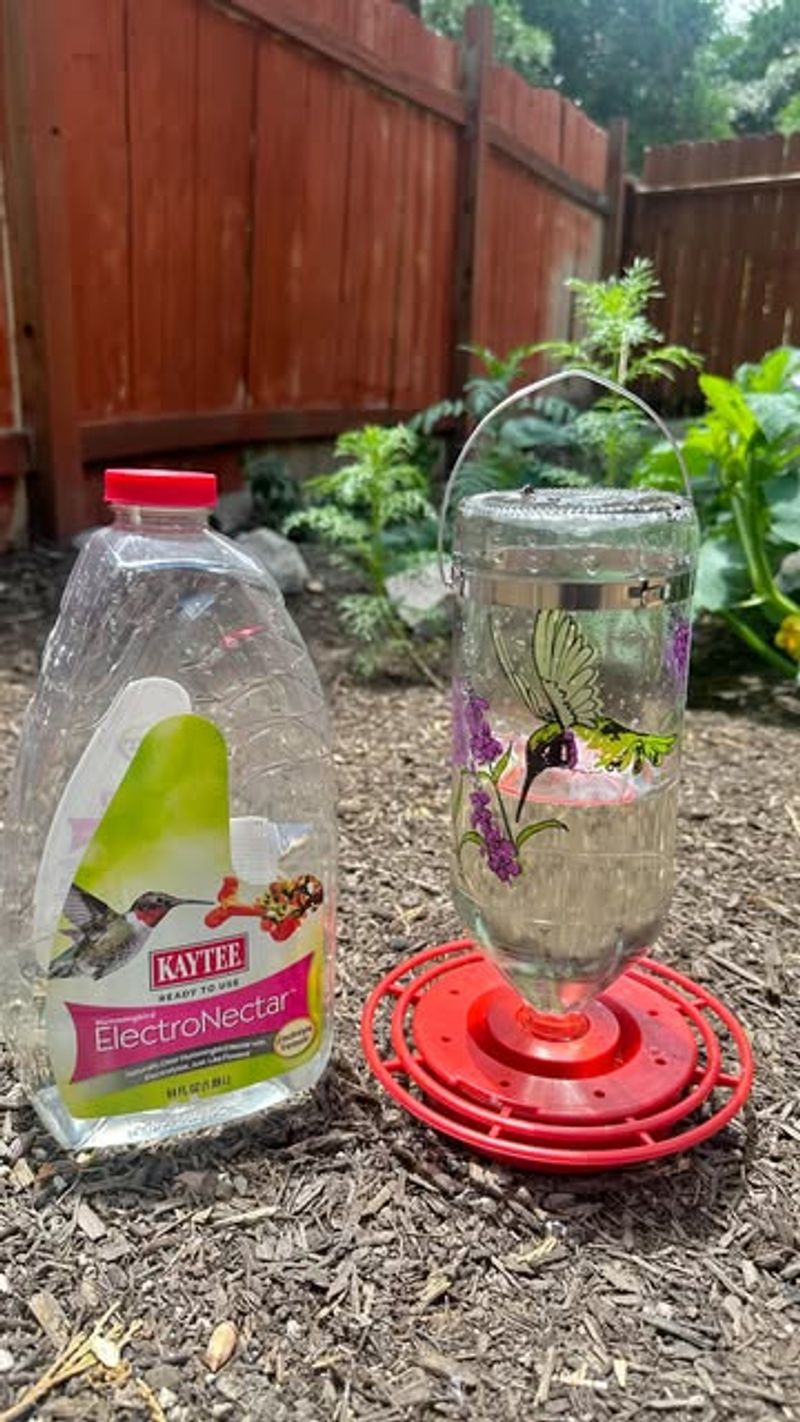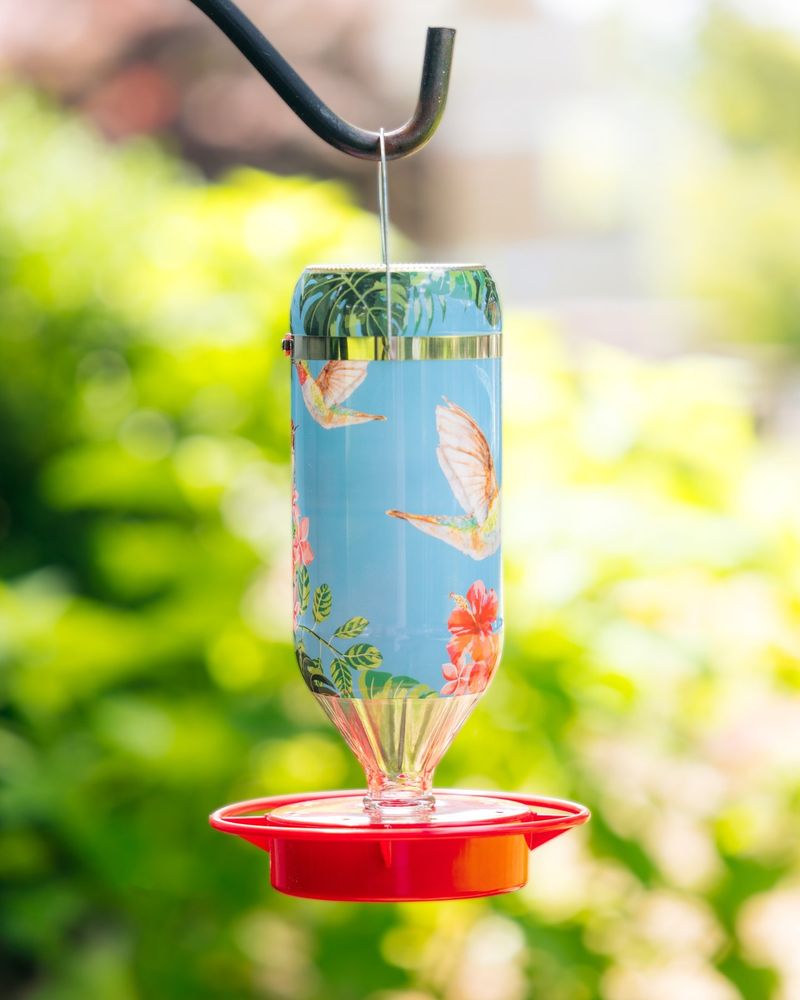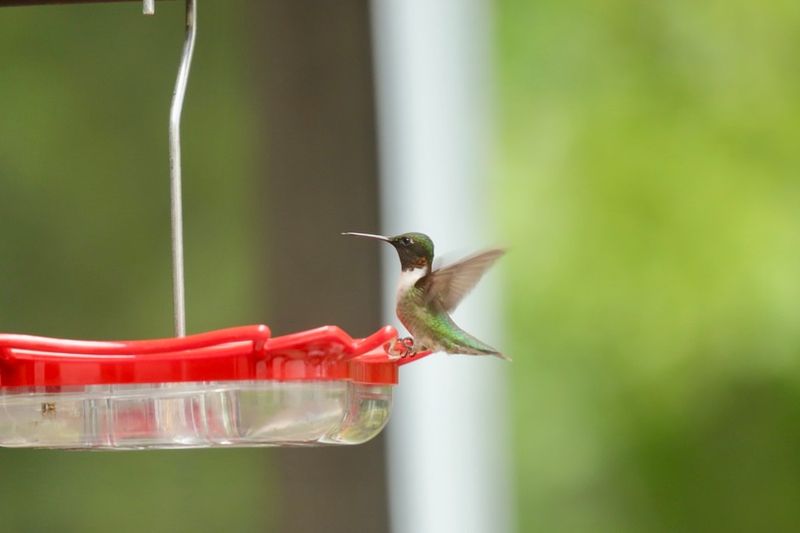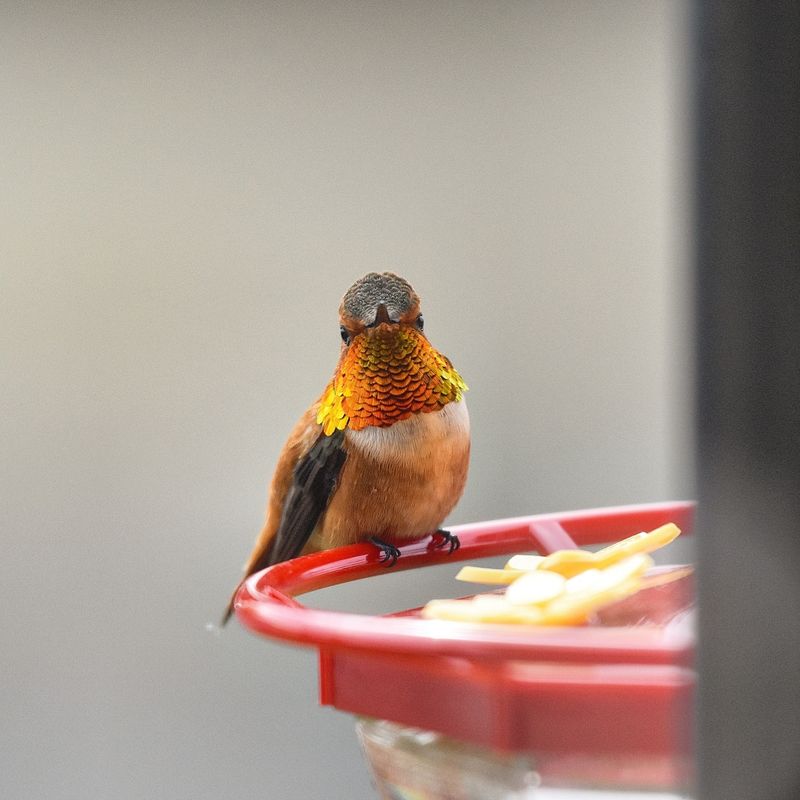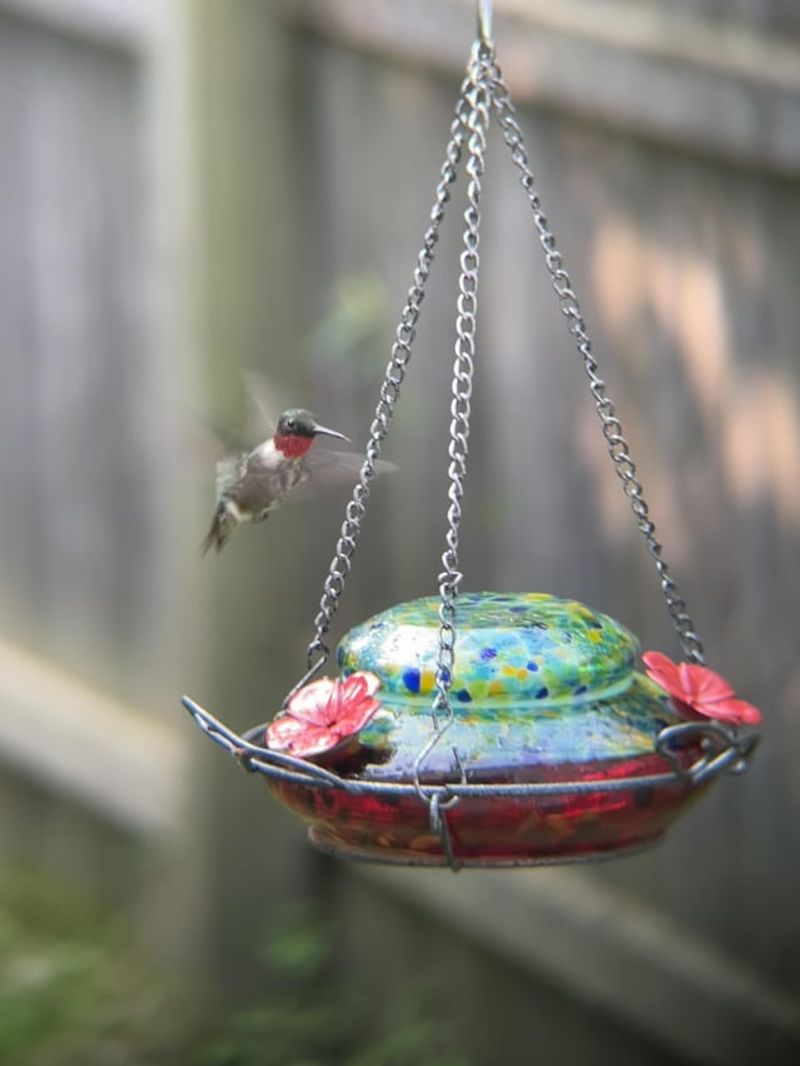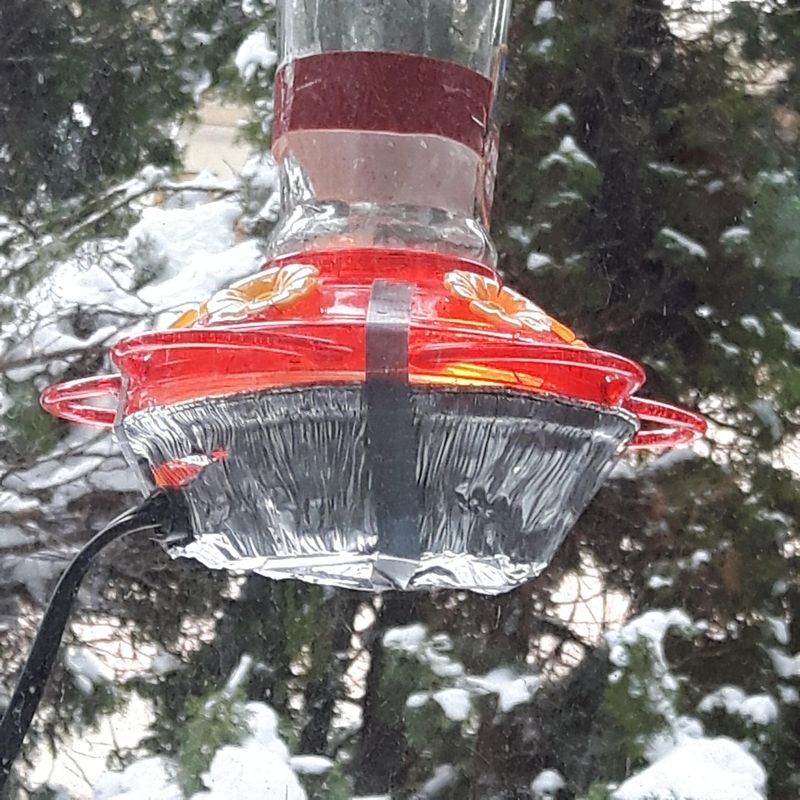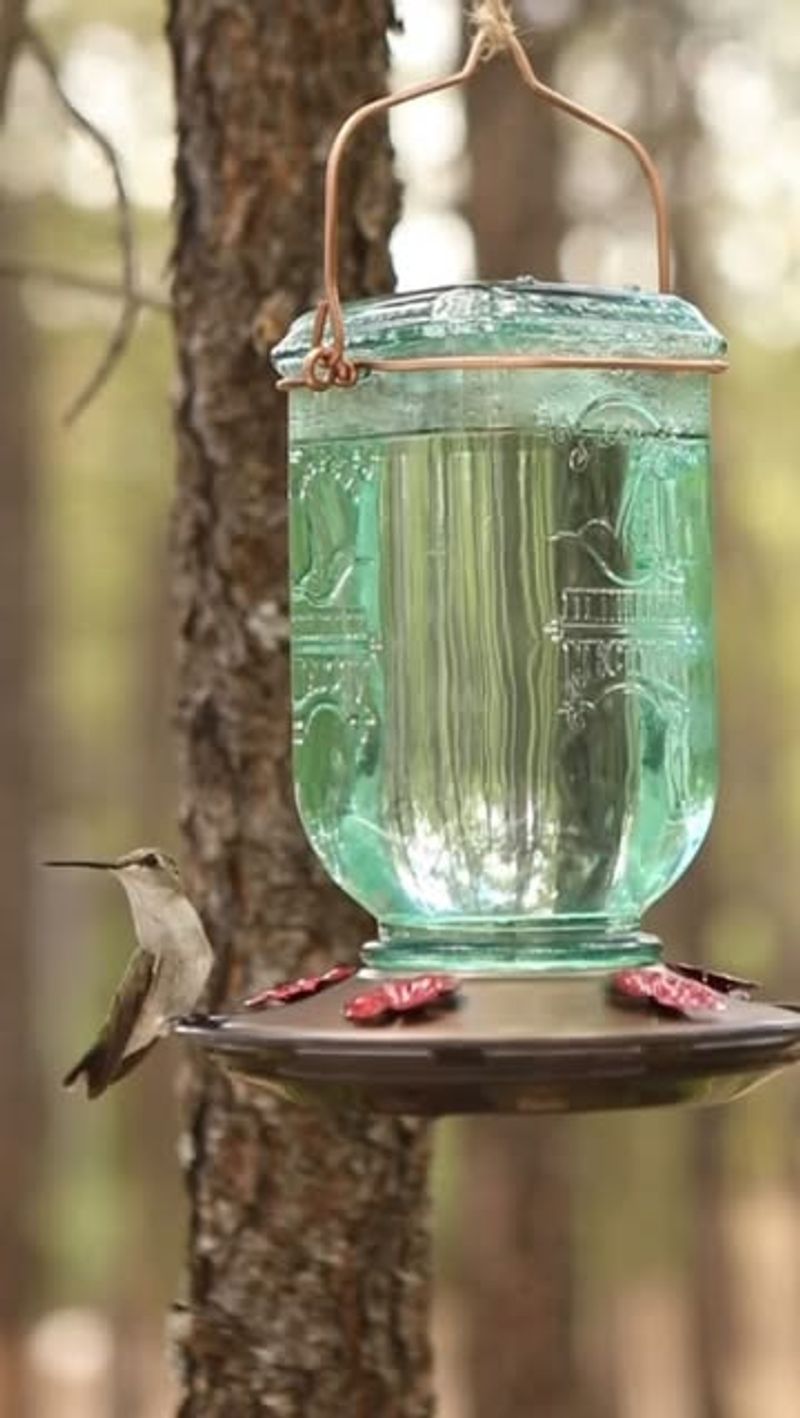Making your own hummingbird nectar is simple—but it’s also easy to get a few things wrong. Even small mistakes can keep birds away or, worse, make them sick. From sugar ratios to feeder cleaning, the little details matter more than you might think.
Check out these common missteps so your feeder becomes a safe and irresistible stop for your fluttering guests.
1. Using The Wrong Sugar Ratio
The perfect nectar mimics natural flower nectar with a simple 1:4 ratio—one part white sugar to four parts water. Many backyard enthusiasts make their mixture too sweet, thinking it will attract more birds.
Too much sugar creates a syrupy solution that’s difficult for hummingbirds to digest and can damage their tiny livers. On the flip side, too little sugar won’t provide enough energy for these high-metabolism birds who beat their wings up to 80 times per second!
2. Adding Red Food Coloring
Red dye is completely unnecessary and potentially harmful to hummingbirds. These intelligent birds find feeders by spotting the red parts of the feeder itself—not the liquid inside.
Food coloring contains chemicals that may cause health problems for these tiny creatures over time. Their bodies aren’t designed to process artificial ingredients. Simply use a feeder with red accents or decorations instead of tampering with the nectar solution.
3. Substituting Honey For Sugar
Honey seems like a natural alternative to white sugar, but it’s actually dangerous for hummingbirds. When diluted with water, honey quickly ferments and grows harmful bacteria and fungi.
These microorganisms can cause a deadly tongue infection called candidiasis in hummingbirds. Plain white table sugar most closely resembles the natural sucrose in flower nectar. Brown sugar, molasses, and artificial sweeteners should also stay out of your feeders.
4. Using Tap Water With Chlorine
Heavily chlorinated tap water can be harmful to hummingbirds. The chemicals that make our drinking water safe might irritate these tiny birds’ sensitive systems.
If your tap water has a strong chlorine smell, consider using filtered water instead. Alternatively, let tap water sit uncovered for 24 hours before mixing nectar—this allows chlorine to evaporate naturally. Never use distilled water, though, as it lacks minerals hummingbirds need.
5. Boiling The Mixture Too Long
Quick-boiling helps dissolve sugar and kill potential pathogens, but excessive boiling concentrates the solution by evaporating water. This accidentally creates a sugar ratio that’s too strong for hummingbirds.
Simply bring your water to a boil, remove from heat, stir in sugar until dissolved, then allow to cool completely. The whole boiling process should take less than a minute. Remember to measure your water again after boiling if significant evaporation occurs.
6. Skipping The Cleaning Routine
Dirty feeders harbor black mold, bacteria, and fungi that cause deadly infections in hummingbirds. That cloudy nectar isn’t just unappealing—it’s dangerous!
Clean feeders thoroughly every 2-3 days in hot weather and at least weekly in cooler temperatures. Use a bottle brush with hot water and a mild dish soap, then rinse completely. For stubborn mold, soak parts in a solution of 1 part white vinegar to 4 parts water.
7. Filling Feeders To The Brim
Overfilling feeders wastes nectar and encourages spoilage. During hot summer days, nectar can ferment in just 1-2 days, becoming harmful to birds.
Add only enough nectar to last 2-3 days based on your hummingbird traffic. Start with smaller amounts and adjust as you learn your visitors’ consumption patterns. This practice reduces waste and ensures birds always have fresh fuel for their incredible metabolisms.
8. Storing Nectar Incorrectly
Homemade nectar needs proper storage to prevent fermentation and mold growth. Some well-meaning enthusiasts keep extra nectar at room temperature, where it quickly becomes a breeding ground for harmful microorganisms.
Store unused nectar in a clean, covered container in the refrigerator. Properly refrigerated nectar stays good for up to two weeks. Label the container with the date you made it, and discard any unused portion after the two-week mark.
9. Hanging Feeders In The Wrong Location
Location matters tremendously for feeder success and nectar preservation. Feeders placed in direct sunlight heat up quickly, causing nectar to spoil within hours instead of days.
Hang feeders in spots that receive morning sun but afternoon shade. This placement protects the nectar from rapid fermentation while still making the feeder visible to passing hummingbirds. Consider areas near trees that provide both shade and perching spots for your tiny visitors.
10. Using Bleach To Clean Feeders
Bleach residue can be toxic to hummingbirds even in tiny amounts. Some bird enthusiasts recommend bleach for sanitizing, but it’s risky unless you’re extremely careful with rinsing.
White vinegar makes a safer alternative for disinfecting feeders. Soak feeder parts in a solution of one part white vinegar to four parts water for an hour, then scrub with bottle brushes. Rinse thoroughly with clean water until all vinegar smell disappears.
11. Forgetting To Check For Leaks
Leaky feeders create sticky messes that attract ants, bees, and potentially harmful molds. The constant dripping also wastes nectar and can create unsanitary conditions for your birds.
Test your feeder for leaks before hanging by filling it with plain water. Watch for drips from seams, feeding ports, or around the base. Apply food-grade silicone to repair minor leaks or replace parts that consistently leak. Properly tightened components prevent most common leakage issues.
12. Making Too Much Nectar At Once
Preparing large batches seems efficient but often leads to waste and potentially spoiled nectar. Fresh is always best for these tiny visitors.
Make smaller batches that will be used within a week. A cup of sugar with four cups of water makes enough to fill several feeders. If you notice nectar consumption increasing during migration seasons, you can always make more as needed rather than risking spoilage.
13. Ignoring Seasonal Temperature Changes
Nectar ferments much faster during hot weather, sometimes becoming harmful within just 24 hours. Many backyard enthusiasts maintain the same feeder routine year-round, not accounting for temperature variations.
During summer heat (80°F+), clean feeders and replace nectar every 1-2 days. In moderate temperatures (70-80°F), every 3-4 days works fine. Cooler weather (below 70°F) allows for weekly cleaning. Adjust your schedule with the seasons to keep your hummingbirds healthy.
14. Using The Microwave Carelessly
Microwaving creates hot spots that can caramelize sugar, altering the nectar’s composition. These sugar changes might seem minor but can be harmful to hummingbirds’ sensitive digestive systems.
If using a microwave, heat just the water first, then stir in sugar until completely dissolved. Alternatively, use the stovetop method for more even heating. Always let nectar cool completely to room temperature before filling feeders to prevent thermal shock to visiting birds.
15. Forgetting Winter Feeder Maintenance
In regions where hummingbirds remain year-round, winter feeding requires special attention. Nectar can freeze and expand, damaging feeders and becoming useless to hungry birds.
During freezing weather, bring feeders inside overnight or use feeder heaters designed for winter bird feeding. Replace feeders early in the morning when temperatures rise slightly. Some dedicated enthusiasts rotate multiple feeders throughout the day to ensure constant access to unfrozen nectar.
16. Using The Wrong Type Of Feeder
Fancy decorative feeders often prioritize appearance over functionality and cleaning ease. Some designs create perfect environments for mold growth in hard-to-reach crevices.
Choose feeders that disassemble completely for thorough cleaning. Saucer-style feeders typically clean easier than bottle types and leak less. Red-colored bases or flower-shaped feeding ports naturally attract hummingbirds without needing dyed nectar. Avoid feeders with yellow components, which attract competitive bees and wasps.

